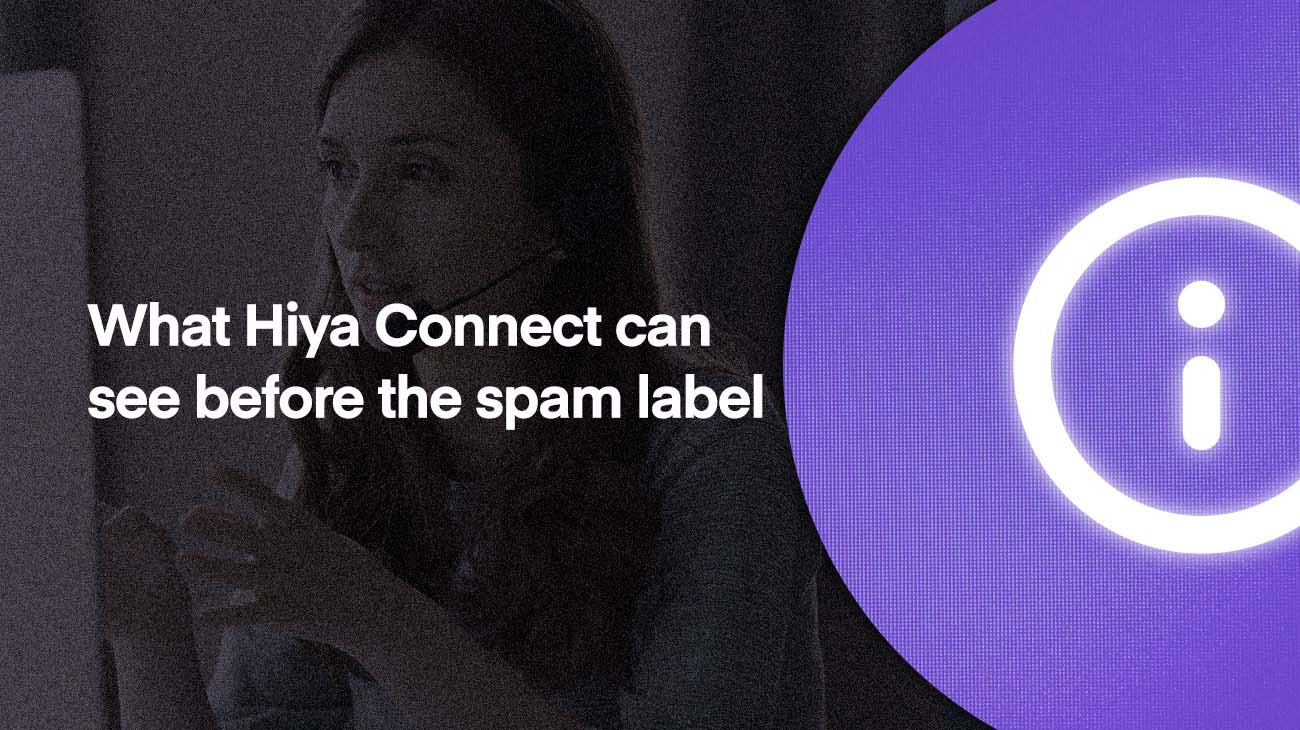
Have you ever had the feeling that your calls are being labeled as spam and there’s nothing you can do about it?
The fact is, spam labels are often applied as a trailing indicator. If you're only looking at spam labels to gauge your call reputation, you're missing some of the early indicators for poor reception of your calls. But the good news is that if you’re using the analytics console in Hiya Connect, you can identify and make changes to your calls before they get labeled as spam by the carrier.
Keep an eye on these analytics
Whether you’re calling customers or prospects, your call recipients all have a phone carrier and that carrier is likely to use a third-party analytics service (such as Hiya) that provides data the carrier uses to determine if a call is spam. For example, Hiya analyzes millions of calls every day looking for patterns that indicate a call may be spam. That information is provided to Hiya’s carrier partners who make the final determination to label it as “spam,” “spam likely,” “fraud likely,” or any other label the carrier uses.
Customers using Hiya Connect have access to a robust analytics console that gives them insight into how call recipients are reacting to calls. Below are data points in the analytics console that indicate your calls could soon attract a spam label.
- Spam call reports – Subscribers using Hiya’s call protection service through their carrier, device manufacturer or the Hiya mobile app have the ability to report calls as spam, usually via an app on their phone. Subscribers can even choose from 15 different types of spam calls. Keep in mind that a user reporting spam doesn’t mean it will automatically be labeled as spam by the carrier. However, if enough users report a number as spam, that’s a signal that the carrier will consider in determining a spam label, along with other data points.
- Blocked caller reports – When a call recipient blocks a number, that means they never want to receive a call from that number again. When many people block a number, that signals to the carrier that it is an unwanted call and may lead to a spam label.
- Calls labeled as spam – This shows calls labeled as spam by the carrier. That means the carrier felt there was enough evidence based on call patterns, reports by users, calls blocked, etc., to conclude that the call is likely to be spam.
As seen in the analytics console of Hiya Connect (“Reputation” tab), a high number of blocked calls and spam reports from call recipients on Aug. 5, resulted in increased calls labeled as spam by the carrier on Aug. 6.
- Call feedback – As mentioned in #1 above, call recipients using Hiya’s call protection service can tap a prompt on their phone to report an incoming call as spam. When they do that, they also have the option to write a comment. These often tell, in the user’s own words, why they are reporting the call as spam.
The “Call feedback” tab in the analytics console of Hiya Connect.
- Answer rates and call duration – These data points, found under the Call Traffic tab, also provide clues on how users are responding to the call. Low answer rates mean recipients aren’t picking up the phone. Maybe your phone number is unidentified, or maybe they can see who is calling but choose not to pick up. Short call durations (usually under 15 seconds) mean the recipient picked up the call but quickly hung up — an indication of an unwanted call.
Related blog post: Beyond answer rates: call duration
The “Call traffic” tab in the analytics console of Hiya Connect.
- Answer rates and call duration – These data points, found under the Call Traffic tab, also provide clues on how users are responding to the call. Low answer rates mean recipients aren’t picking up the phone. Maybe your phone number is unidentified, or maybe they can see who is calling but choose not to pick up. Short call durations (usually under 15 seconds) mean the recipient picked up the call but quickly hung up — an indication of an unwanted call.
Related blog post: Beyond answer rates: call duration
How to use console data to mitigate spam labels
There’s a wealth of information in the analytics console in Hiya Connect, information that can help you make changes to your calls before they receive a spam label by the carrier.
For example, if you look at your data and see a spike in spam reports or blocked calls, that’s an indicator that a spam label by the carrier may soon follow. To see what the problem may be, read through the call feedback to discover why users are reporting the calls. It could be something simple. Maybe users are saying that the caller phoned too late at night, so you need to adjust the time frame for your calls. Or, maybe several users report that when they picked up the phone no one was there. In that case you may want to adjust your dialer so there is a shorter delay.
The analytics console can also zero in on specific phone numbers. In some smaller calling operations, each agent might be assigned an outbound calling number. It could be that just one or two agents are generating high volumes of spam reports and blocked calls. If so, read the call feedback to see why customers are dissatisfied.
Learn more
For additional insight on why calls are reported as spam and what you can do to turn that around, download our eBook below.
10 Tips to Improve Your Reputation and Get Your Business Calls Answered



